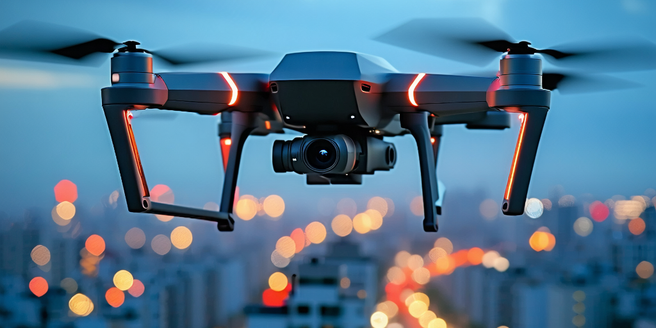Ai In Autonomous Drones

The Evolution of AI in Drone Technology
The integration of AI into drone technology represents a watershed moment in the evolution of robotics and automation. Initially, drones were simple remotely controlled devices, but the advent of AI has transformed them into highly autonomous machines. AI algorithms enable drones to process vast amounts of data, allowing for real-time decision-making and adaptive learning. Over the years, improvements in machine learning have equipped drones with sophisticated capabilities such as object recognition, obstacle detection, and efficient flight path optimization. As AI technology further advances, drones are expected to become smarter, more efficient, and capable of performing a wider array of tasks. This evolution is crucial for expanding the applications of drones beyond traditional sectors, paving the way for innovative uses in logistics, agriculture, surveillance, and more.
How AI Enhances Drone Navigation and Control
AI significantly enhances drone navigation and control by improving accuracy and efficiency. Traditional drone systems relied heavily on GPS for navigation, but AI introduces advanced sensor fusion techniques that integrate data from multiple sources like cameras, LiDAR, and inertial measurement units. This integration enables drones to navigate complex environments with precision, even in GPS-denied areas. AI also empowers drones with real-time obstacle detection and avoidance capabilities, ensuring safer operations in varied conditions. Machine learning algorithms continuously refine navigation strategies based on environmental feedback, adapting to new situations and minimizing human intervention. As a result, AI-driven drones achieve smoother flight control, greater operational efficiency, and enhanced mission success rates. This technological leap is driving the adoption of drones in industries such as delivery, inspection, and disaster response.
AI-Driven Safety Features in Autonomous Drones
AI-driven safety features are revolutionizing the operational security of autonomous drones. These features include collision avoidance systems that utilize machine learning algorithms to detect obstacles in real-time and adjust flight paths accordingly. By leveraging AI, drones can assess potential risks and make split-second decisions to prevent accidents, enhancing both safety and reliability. Additionally, AI algorithms contribute to fail-safe mechanisms that allow for safe landings in case of system failures. Predictive maintenance powered by AI also plays a crucial role, enabling drones to monitor their own systems, predict malfunctions, and schedule preventative repairs. These safety advancements ensure that drones can operate safely in various environments, meeting stringent regulatory standards and gaining the trust of users across different sectors, from commercial delivery services to aerial surveys.
Real-World Applications of AI-Powered Drones
AI-powered drones are transforming numerous industries with their versatile applications. In agriculture, AI drones optimize crop monitoring through precise data analysis, enhancing yield predictions and resource management. The construction industry utilizes these drones for efficient site surveys and progress tracking, reducing time and labor costs. AI also plays a pivotal role in public safety, with drones assisting in search and rescue missions by rapidly scanning large areas and identifying missing persons. Environmental conservation efforts benefit as well, with drones monitoring wildlife and natural habitats without disrupting ecosystems. The rise of AI-equipped drones in logistics is particularly noteworthy, as companies explore automated package delivery solutions for faster and more efficient service. These real-world applications underscore the significant impact of AI in advancing drone capabilities across diverse sectors.
Future Prospects for AI in the Drone Industry
The future prospects for AI in the drone industry are incredibly promising, with advancements poised to revolutionize multiple sectors. Enhanced AI algorithms will lead to even greater autonomy, allowing drones to perform complex missions with minimal human intervention. The integration of AI with other emerging technologies, such as 5G connectivity and edge computing, will enable real-time data processing and decision-making on a scale never before possible. This evolution opens doors to innovative applications like urban air mobility and precision agriculture. Regulatory frameworks are also evolving, accommodating increased drone usage and promoting further industry growth. As AI technology continues to mature, it will drive down costs, improve operational efficiency, and expand the reach of drones into new areas, ensuring they remain at the forefront of the technological landscape.